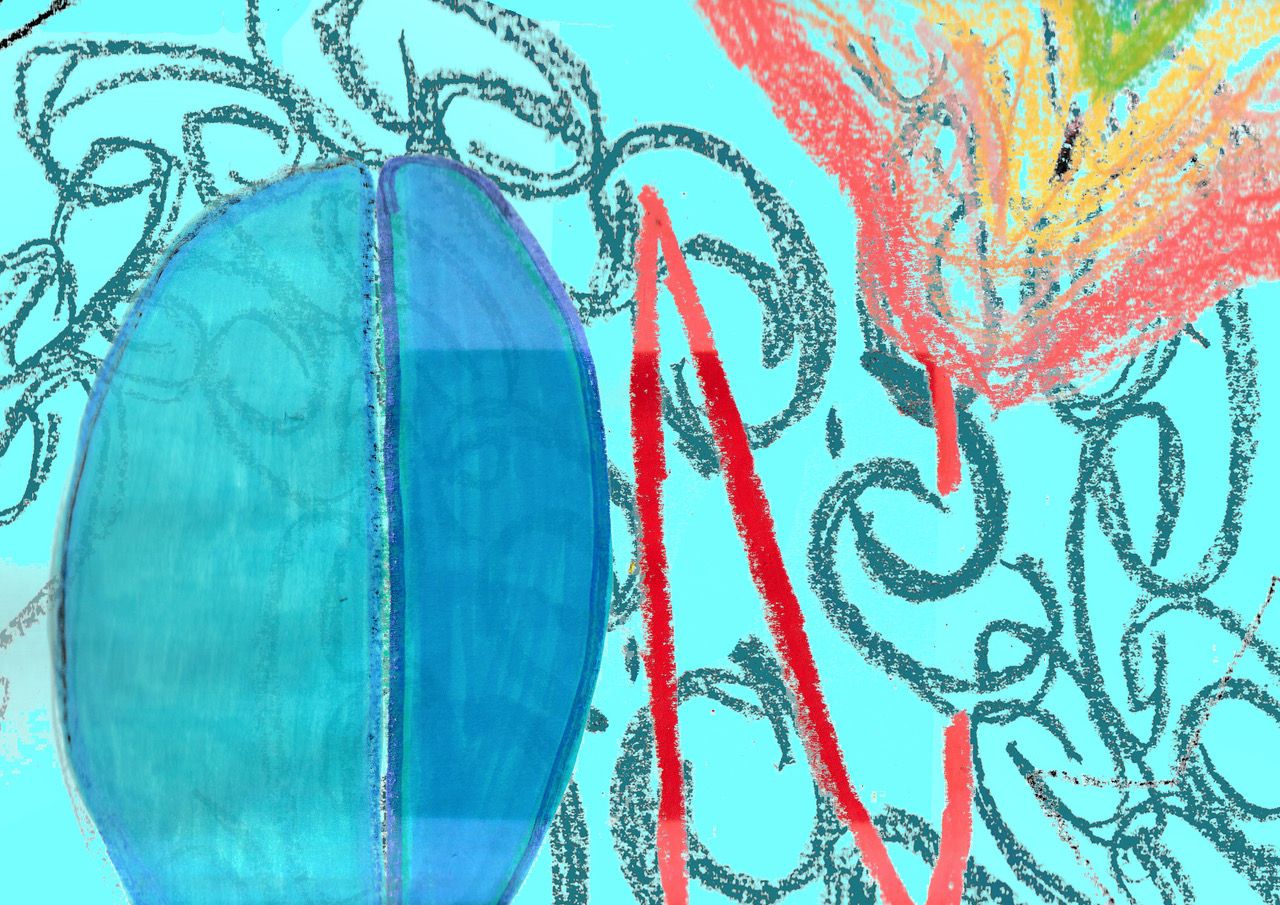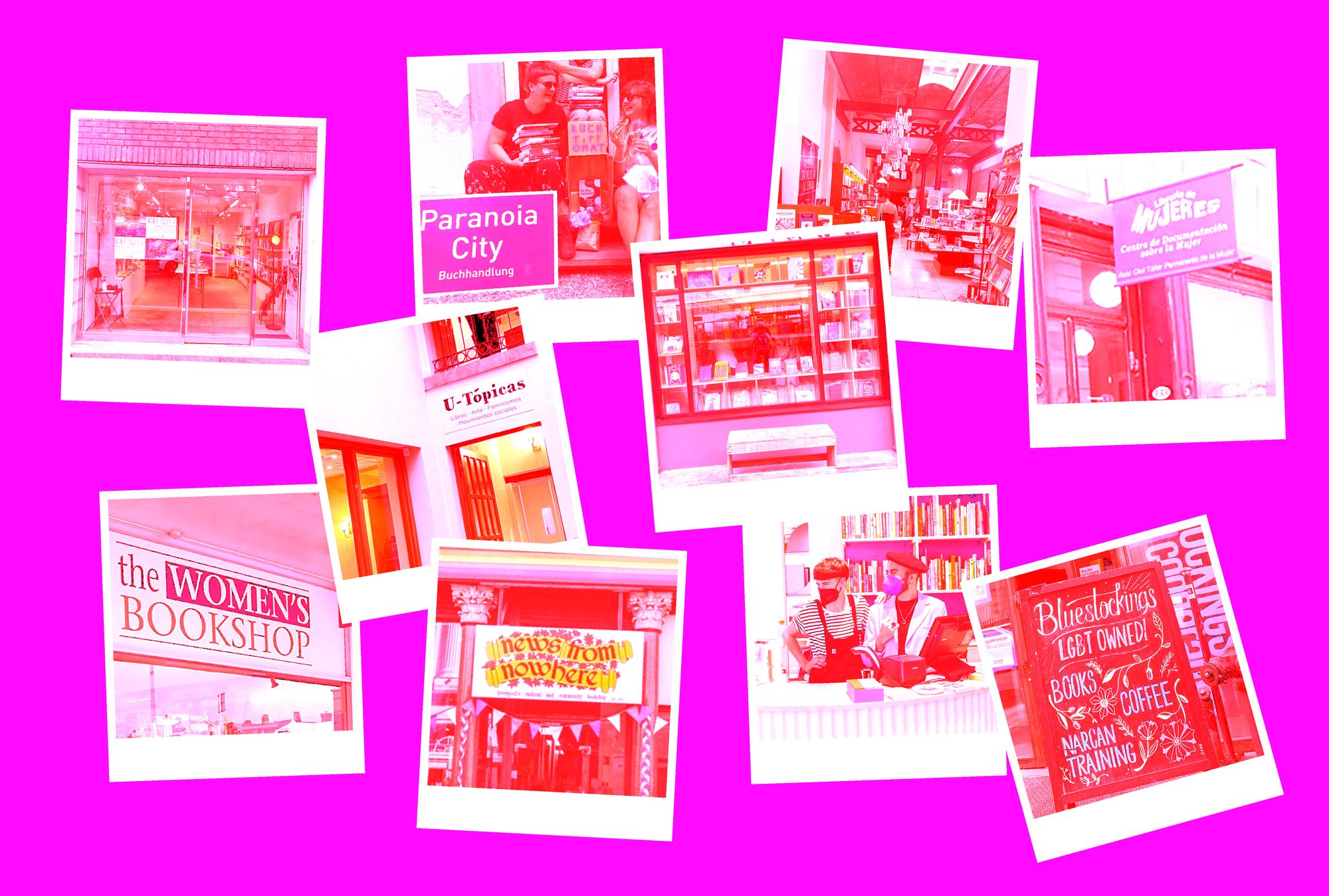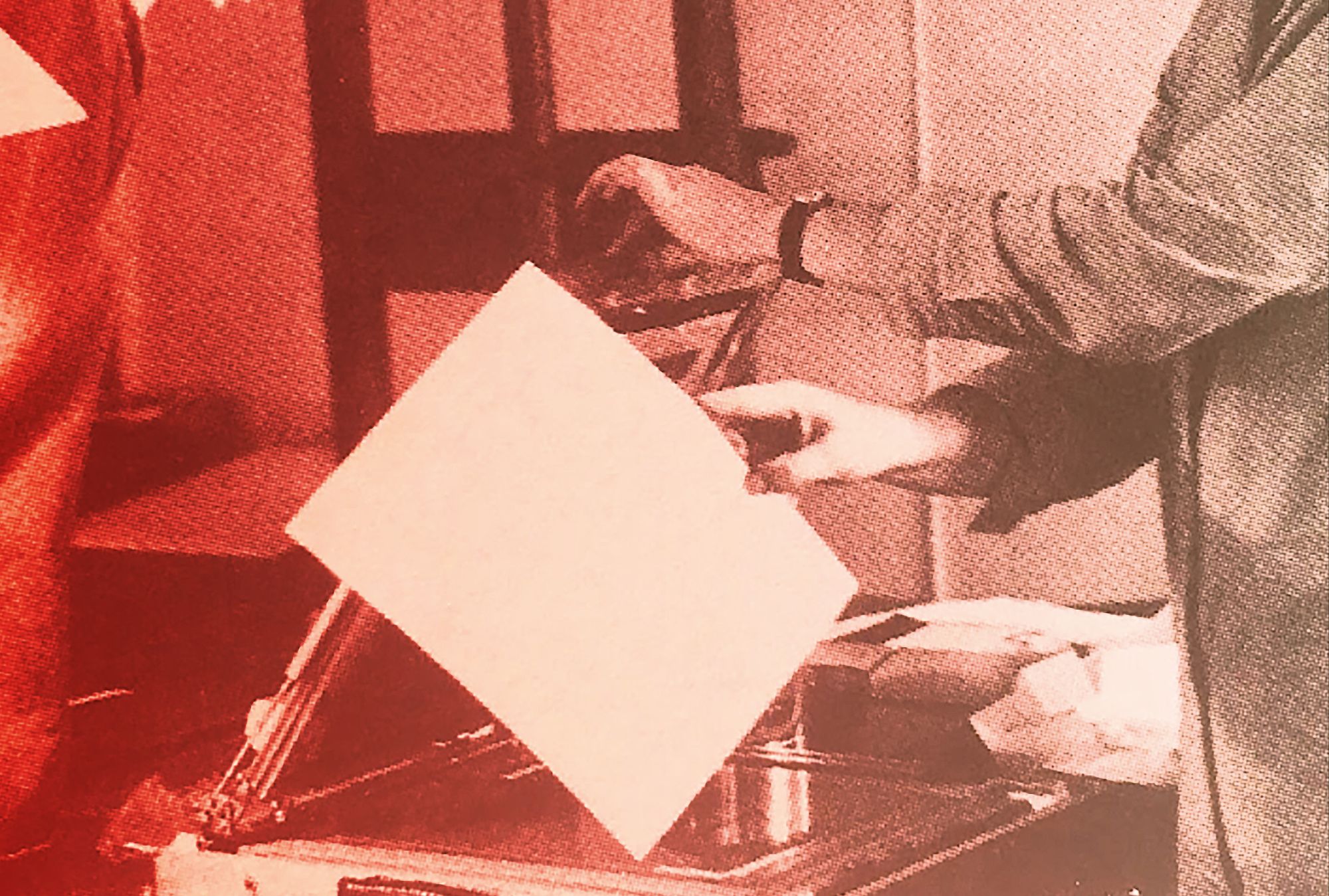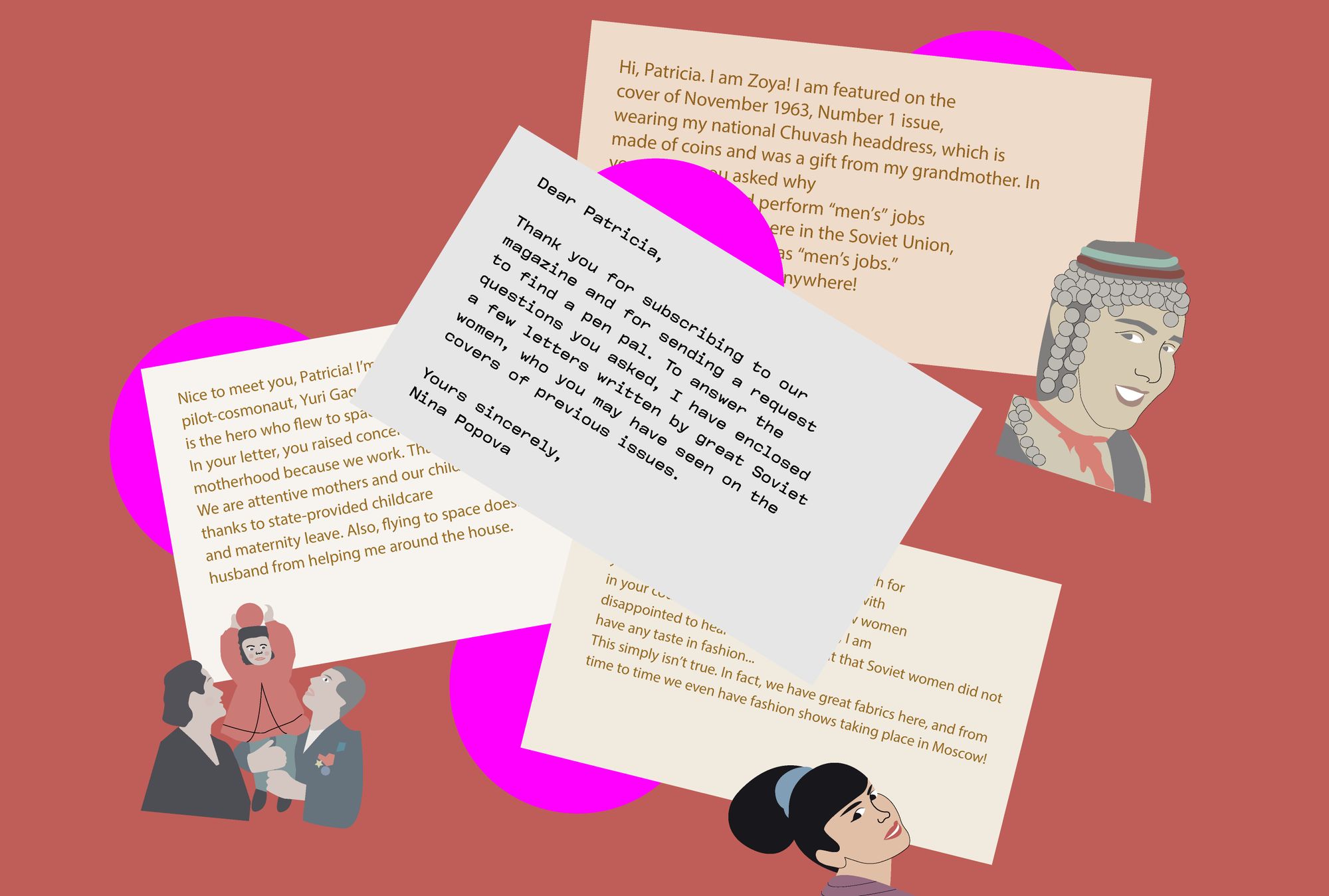
Between 1945 and 1991 a lifestyle magazine for women was published in the Soviet Union. Called Soviet Woman, it was exported to 148 countries and one of its most striking features may well be its special pen pal network. Through it, women mainly from the US and UK would be matched with women in the Soviet Union to exchange letters. Their correspondences would then be printed in the magazine. As I was researching the publication, however, all I had to go on were the covers of the magazine. I had no access to any original pen pal letters. To better understand and illustrate the social function of this pen pal network, I therefore resorted to a bit of fiction.
Woven into this text are a series of partially fictional letters between a woman called Patricia from the US and a group of Soviet women. The Soviet characters are based on real women that were featured on the covers of the magazine. It’s true that Nina Popova was the editor of Soviet Woman in the 1950s. Her words here, however, are completely made up.

In 1957, Nina Popova, proposed that the magazine should depict the liberation and empowerment of women in previously underdeveloped republics of the Soviet Union due to new policies implemented by the government. She also wanted to emphasize
how the Soviet Union had embraced multinationalism by bringing women from underdeveloped regions of the Union into the spotlight.
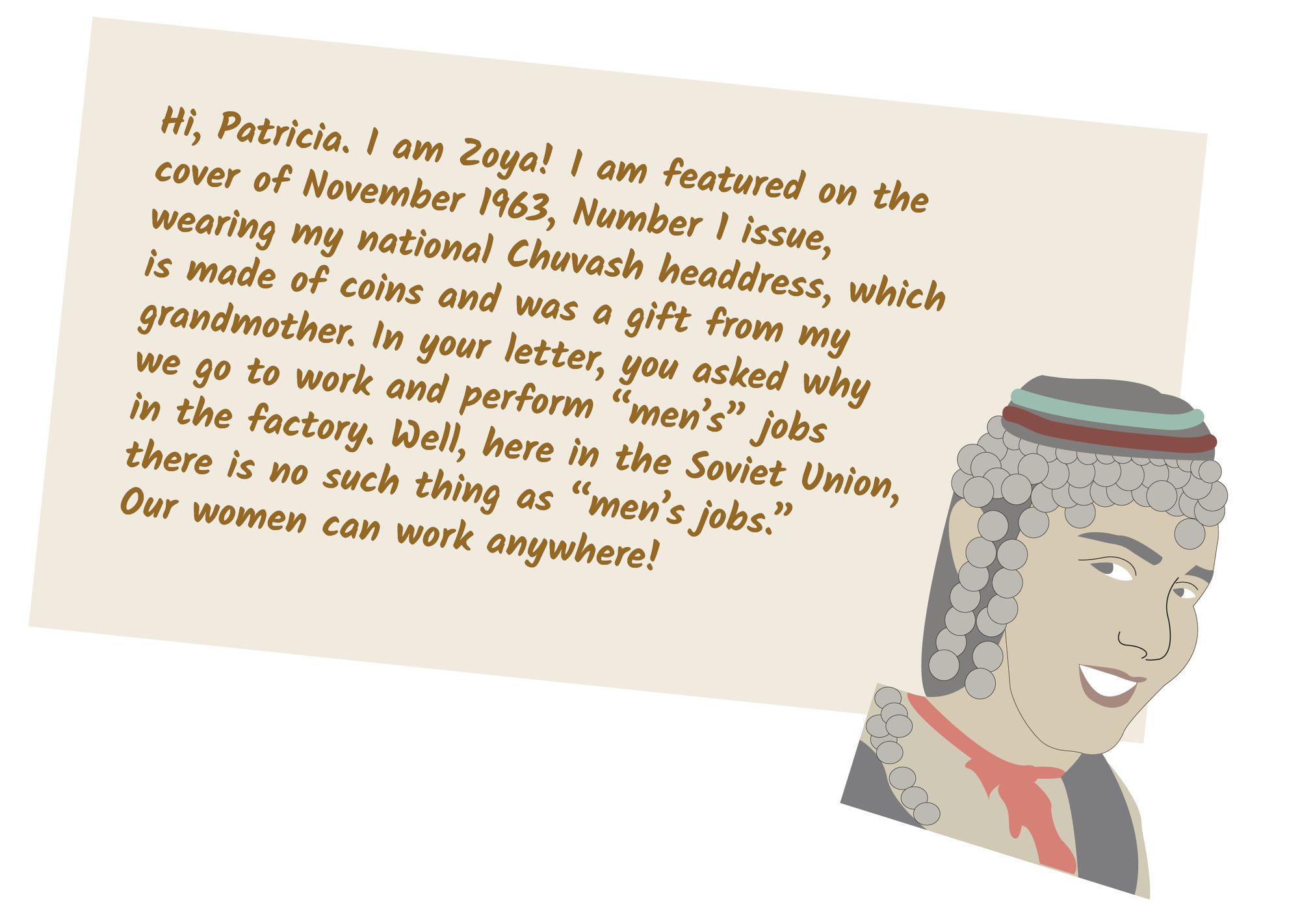
Western pen pals had voiced their concerns regarding the impossibility of being attentive mothers while also being full-time employees, and the editorial staff decided to do something to challenge this preconception. Every woman featured on the cover of the magazine suddenly turned into a mother, always shot in a domestic setting.
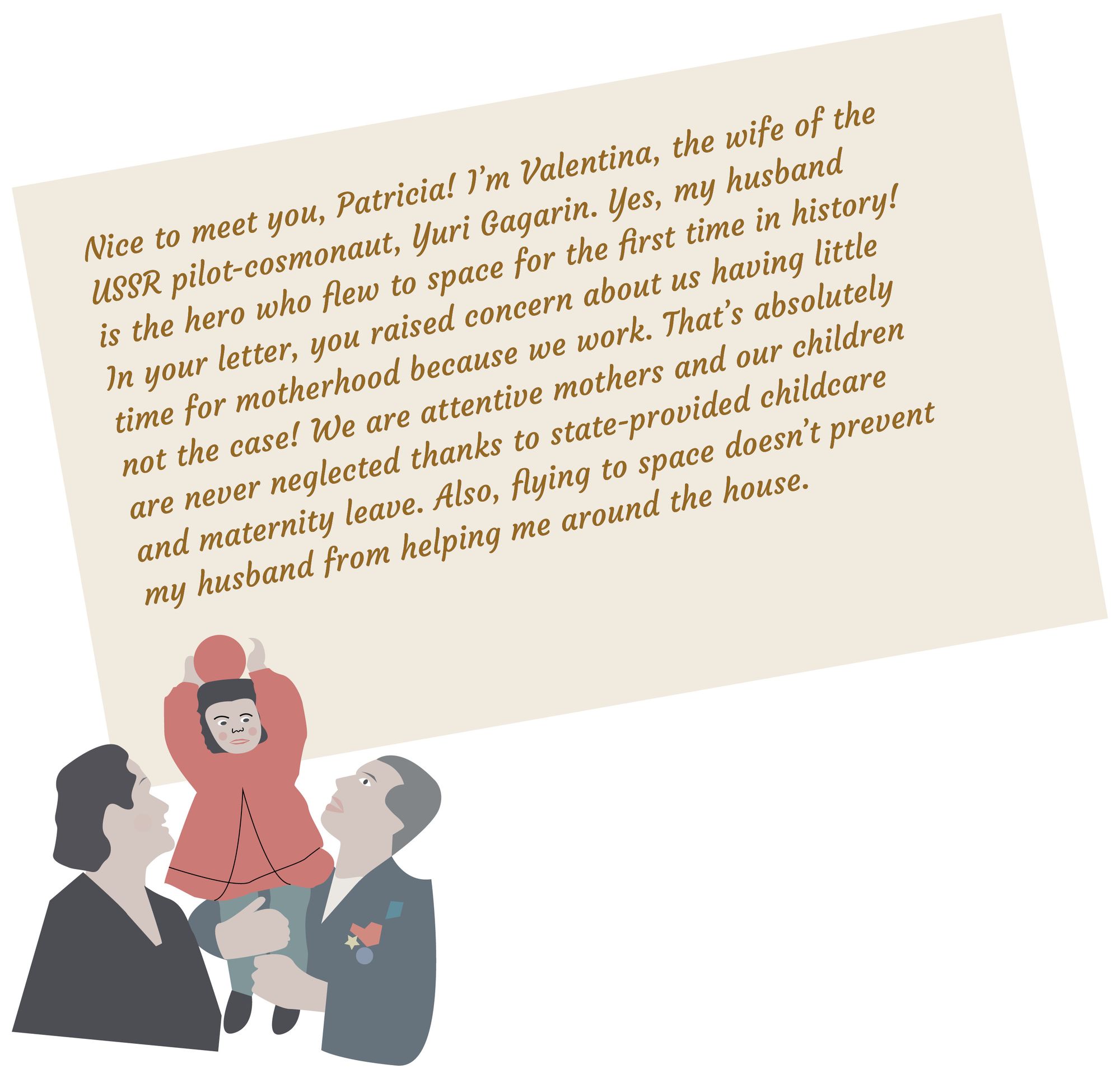
After World War II, the fashion section of Soviet Woman gained more importance. With the rise of a consumerist middle-class, fashion became a symbol of national recovery. The magazine went up against the stereotypical image of “masculine” Soviet women that had persisted in the Western press. What’s more, the editorial staff was aware that the pen pal letters exposed Soviet women to the fashions of the West with its dazzling, colorful styles. However, the more the magazine put fashion in the center and portrayed women in unattainable attires, the more irritated the local audience became. The task of balancing different readerships and objectives—both at home and abroad—remained a constant challenge for the magazine during the later years of its existence.
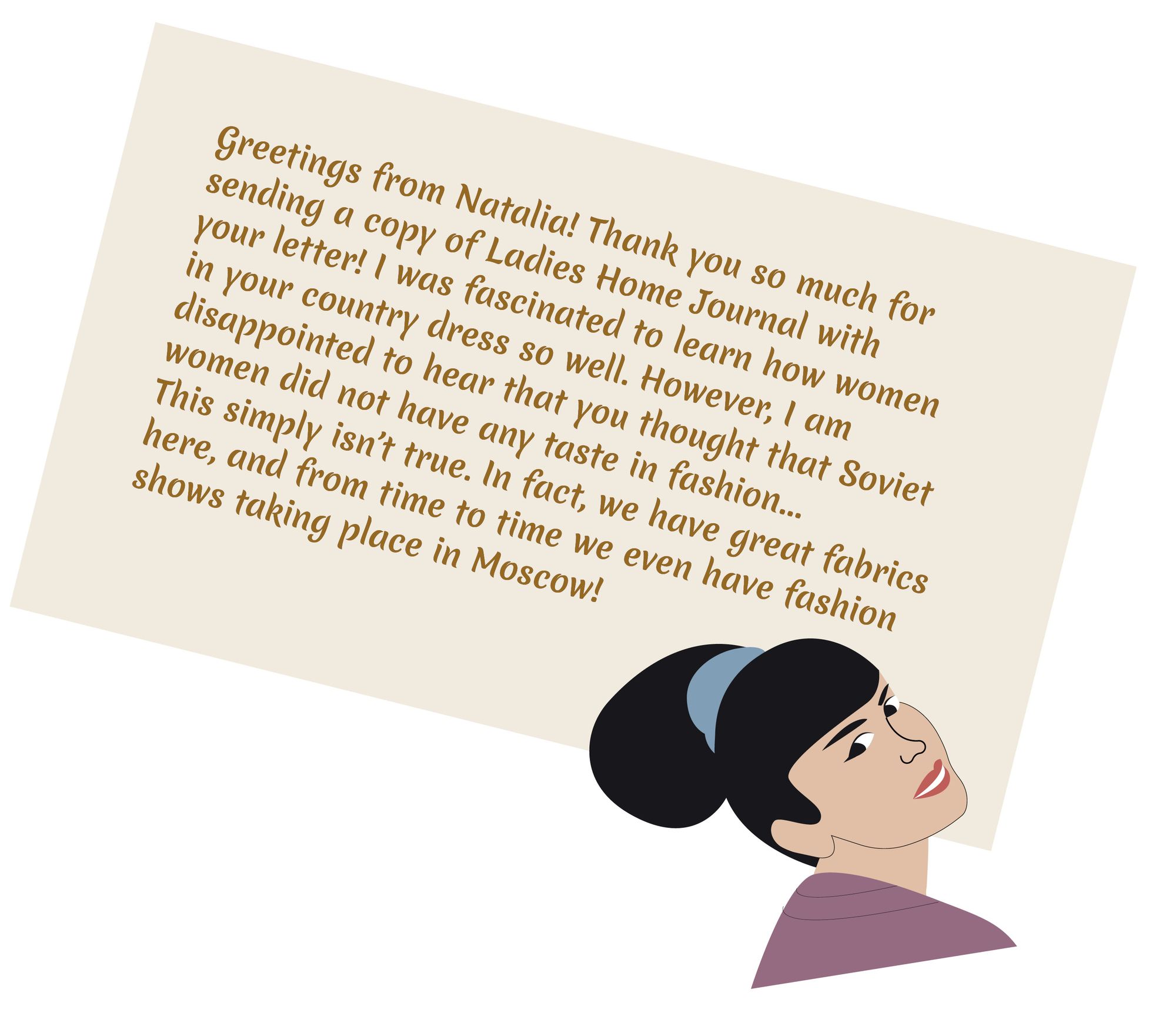
The pen pal network clearly played a role in shaping the magazine’s own editorial content, as the comments received from Western correspondents were used to better address the interests of the magazine’s foreign reader segment. Soviet Woman’s pen pal network can mostly be seen as a geopolitical tool for shaping the international profile of the Soviet Union. But it also provided a diplomatic space for women to correspond with one another across cultural divides and national borders during a period when the relations between the Western Allies and the Soviet Union had deteriorated. There are often multiple plots going on at the same time.
Mujgan Abdulzade (she/her) is a visual designer based in Berlin, Germany with a strong interest in information design and storytelling. She holds an M.A in Integrated Design from the Hochschule Anhalt in Dessau. With her work, Mujgan tries to shed light on gender, social, and environmental issues through design activism strategies.
This text was produced as part of the L.i.P. workshop, and has previously been published in the Feminist Findings zine.




